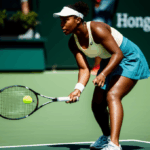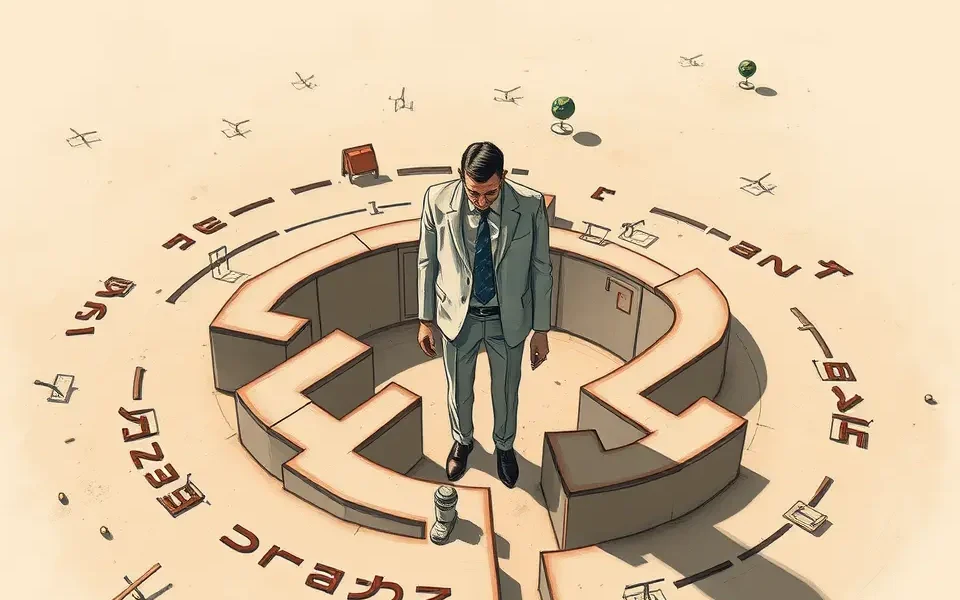Jack Draper’s promising run at the 2025 French Open came to an abrupt end in the fourth round, as he fell to a determined Alexander Bublik. While Draper entered the match as the higher-ranked player and a favorite, Bublik’s inspired performance and tactical acumen proved to be the deciding factors. This defeat exposed some vulnerabilities in Draper’s game, highlighting areas where he needs to improve to compete at the highest level on clay.
The Match Overview
The match between Draper and Bublik was a captivating contest, filled with momentum shifts and dramatic moments. Draper started strongly, capturing the first set 7-5. However, Bublik responded emphatically, winning the next three sets 6-3, 6-2, and 6-4 to secure his place in the quarter-finals.
- First Set: Draper edged out Bublik, showcasing solid baseline play and capitalizing on a late double fault from his opponent.
- Second Set: Bublik regrouped, increasing his aggression and dictating terms with his powerful forehand.
- Third Set: Bublik continued to dominate, utilizing drop shots and sharp angles to keep Draper off balance.
- Fourth Set: Draper fought hard to stay in the match, saving multiple break points, but Bublik ultimately prevailed, converting his second match point.
Bublik’s Tactical Masterclass
Alexander Bublik’s victory was not merely a result of powerful hitting; it was a carefully constructed tactical plan executed with precision. Several key elements contributed to his success:
1. Drop Shot Devastation
Bublik’s use of the drop shot proved to be a game-changer. According to reports, Bublik used the drop shot to devastating effect, drawing Draper out of his comfort zone and disrupting his rhythm. Draper struggled to anticipate these shots and often found himself scrambling to retrieve them, which disrupted his ability to control rallies from the baseline.
2. First Serve Dominance
Bublik’s serve was a major weapon throughout the match. He consistently generated high percentages of first-serve points won, putting Draper under pressure from the start of the rally. Bublik won 79% of his first-serve points, showcasing the effectiveness of this tactic.
3. Net Play Aggression
Bublik displayed sharp reflexes and anticipation at the net, winning a high percentage of his net approaches. This aggressive net play forced Draper to hit passing shots under pressure, often leading to errors. Razor-sharp reactions at the net kept Bublik in the ascendancy, the disguised drop shots kept Draper guessing.
4. Capitalizing on Draper’s Errors
As the match wore on, Draper’s error count increased, particularly on his forehand side. Bublik effectively exploited this weakness by directing a large number of balls to Draper’s forehand, forcing him to play defensively.
5. Mental Fortitude
Despite dropping the first set, Bublik maintained his composure and focus. He raised his level in the subsequent sets, demonstrating mental resilience and a strong belief in his game plan. Bublik recognized the significance of the match, stating, “Sometimes in life there is only one chance and I had a feeling that that was mine. I couldn’t let it slip. Standing here now is the best moment of my life.”
Draper’s Tactical Missteps
While Bublik’s performance was commendable, Draper also contributed to his own downfall through several tactical errors:
1. Inability to Adjust to Drop Shots
Draper struggled to adapt to Bublik’s frequent drop shots. He often reacted late, failing to cover the ground quickly enough to execute effective replies. This suggests a need to improve his court coverage and anticipation skills.
2. Forehand Inconsistencies
Draper’s forehand, typically a reliable weapon, became erratic as the match progressed. He committed a number of unforced errors on this side, particularly when under pressure. This indicates a need to enhance his forehand consistency and develop a wider range of shot options.
3. Reactive Instead of Proactive
Draper often found himself reacting to Bublik’s tactics rather than dictating play himself. He struggled to impose his own game plan and failed to take control of rallies consistently. This highlights a need to become more proactive and assertive on the court.
4. Difficulty Breaking Bublik’s Serve
Draper struggled to break Bublik’s serve consistently, failing to capitalize on the few opportunities that arose. This suggests a need to improve his return of serve and develop more effective strategies for attacking his opponent’s service games. Draper had five chances to break back with Bublik serving for the match but in the end, the Kazakh held his nerve.
Analysis of Key Moments
Several key moments in the match underscored Bublik’s tactical superiority and Draper’s struggles:
- Late Break in the First Set: Draper secured a crucial break to win the first set, but this was more due to a Bublik double fault than any tactical brilliance on Draper’s part.
- Bublik’s Response in the Second Set: Bublik immediately increased his aggression and began dictating play, breaking Draper early and establishing a lead he never relinquished.
- Draper’s Missed Opportunities in the Fourth Set: In the final game, Draper had multiple break points to get back into the set, but he failed to convert any of them, highlighting his inability to rise to the occasion under pressure.
The Broader Implications for Draper
Draper’s defeat at the French Open serves as a valuable learning experience in his burgeoning career. While he has made significant strides this season, reaching a career-high ranking and achieving success on clay, this loss exposes areas where he needs to improve to compete consistently at the highest level.
1. Enhance Clay Court Movement
Draper needs to improve his movement on clay, particularly his ability to slide and change direction quickly. This will enable him to cover the court more effectively and handle tricky shots like drop shots with greater ease.
2. Develop Forehand Versatility
Draper should work on developing a wider range of forehand shots, including the ability to hit with more spin, angle, and depth. This will make his forehand less predictable and more difficult for opponents to attack.
3. Increase Tactical Awareness
Draper needs to become more tactically astute, developing a greater understanding of his opponents’ strengths and weaknesses and adjusting his game plan accordingly. This includes recognizing when to attack, when to defend, and how to exploit specific vulnerabilities.
4. Mental Toughness Training
Draper should consider incorporating mental toughness training into his routine to improve his ability to handle pressure and maintain focus in crucial moments. This could involve techniques such as visualization, meditation, and positive self-talk.
Bublik’s Breakthrough
For Alexander Bublik, this victory represents a significant breakthrough in his career. Known for his unconventional style and unpredictable shot-making, Bublik has often struggled to translate his talent into consistent results. However, his performance at the French Open demonstrates his potential to compete with the best players in the world when he is focused and committed. Alexander Bublik’s breakthrough Roland Garros run continued Monday with a four-set upset of Jack Draper, his second Top 10 win of the week. Never having been beyond the second round at the Paris major, even dating back to his junior days, Bublik also came back from two sets down to defeat Alex de Minaur this fortnight.
Concluding Thoughts
Jack Draper’s loss to Alexander Bublik at the French Open was a harsh lesson, highlighting the importance of tactical flexibility and mental fortitude in high-stakes matches. While Draper possesses immense talent and potential, he needs to address the vulnerabilities exposed in this match to elevate his game to the next level. For Bublik, this victory is a testament to his ability to execute a well-defined game plan and maintain focus under pressure. As he progresses through the tournament, he will undoubtedly draw confidence from this performance, knowing that he has the ability to compete with the best players on any surface.








No Comment! Be the first one.